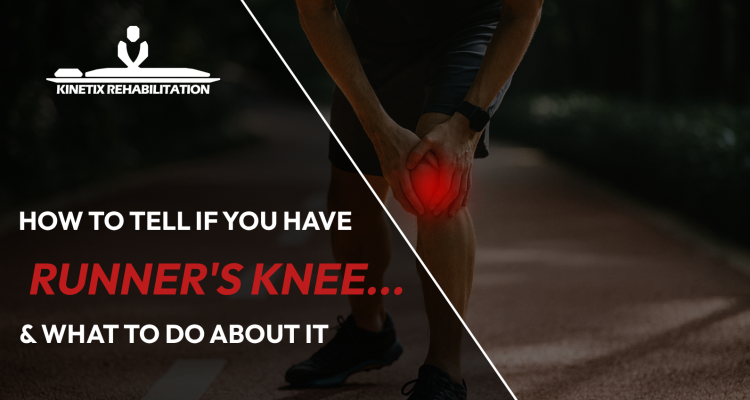
Overcoming Runner’s Knee (PFPS): What Caused It and How I Fixed It
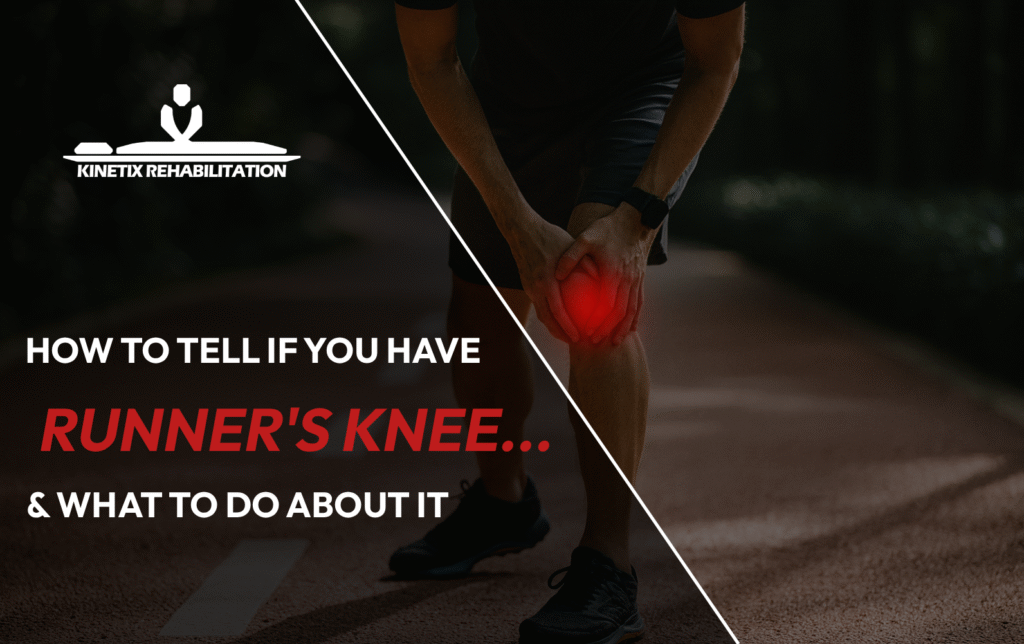
My Run-In with Runner’s Knee: Overcoming Patellofemoral Pain Syndrome
It started as a mild ache on the outside of my kneecap during a routine run. I shrugged it off as “just one of those runner pains” and kept pushing. A week later, I was limping home, knee throbbing. That’s when I realised: I had the dreaded Runner’s Knee. Little did I know this would kick off a journey of frustration, learning, and ultimately recovery. In today’s blog, I want to talk about something I’ve personally experienced, that dull, frustrating ache around the front of the knee that creeps in after runs: Runner’s Knee, also known as Patellofemoral Pain Syndrome (PFPS).
For me, it started when I caught that runner’s high and ramped up my training volume too quickly, extra runs in the week, longer sessions, and not enough recovery. Within a few weeks, that mild ache turned into a sharp, consistent pain every time I went downstairs or stood up after sitting for too long.
If this sounds familiar, you’re not alone. Runner’s knee is one of the most common injuries I see in both new and experienced runners. Let’s break down what it really is, why it happens, and how you can overcome it, with a bit of evidence, experience, and a story or two from my own recovery journey.
What Is Runner’s Knee, Anyway?
“Runner’s knee” is actually a pretty spot-on nickname. Clinically, Patellofemoral Pain Syndrome (PFPS) is defined as pain arising from the patellofemoral joint; the area where the patella meets the femur, and is aggravated by activities that increase pressure on the joint, such as squatting, running, or prolonged sitting (Crossley et al., 2016), – which is just a fancy way to say “your kneecap area hurts when you load the knee, but there’s no obvious structural damage like a tear.” PFPS often lacks a specific, identifiable structural lesion like a ligament tear or muscle strain. Instead, the pain is caused by the irritation and inflammation of the soft tissues surrounding the kneecap, triggered by improper mechanics and increased stress over time (Lankhorst et al., 2013).
Runner’s knee is incredibly common, not just for marathoners, but for everyday runners and even non-runners. PFPS is one of the most prevalent causes of knee pain in physically active adults, affecting an estimated 15–45 % of people at some point (Smith et al., 2018). Among runners, it’s practically an epidemic, accounting for roughly 19–30 % of all injuries in women and 13–24 % in men (Esculier et al., 2016). No wonder they call it runner’s knee!
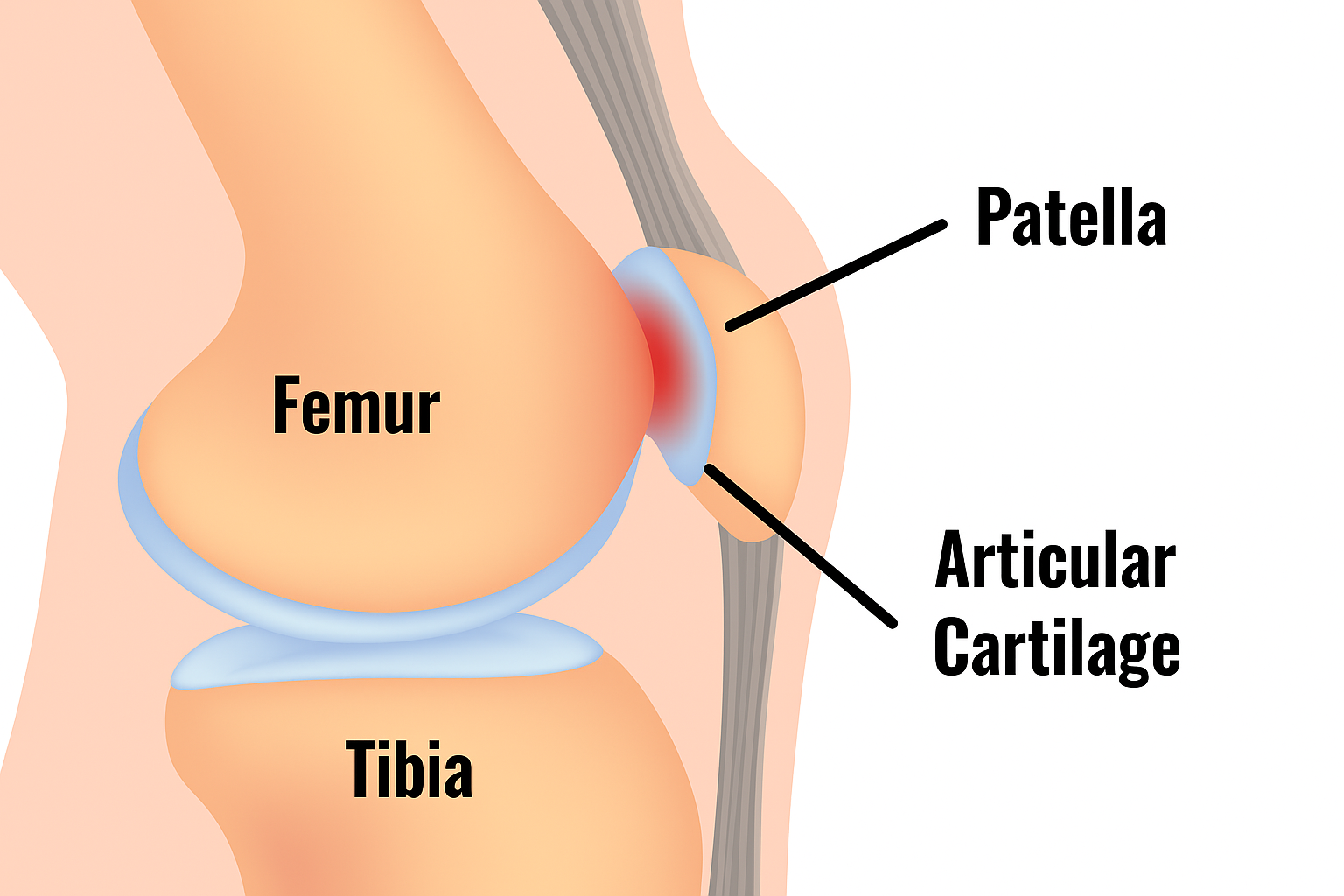
The good news (if you can call it that) is that runner’s knee is usually an “overuse” injury rather than an acute traumatic one. That means it creeps up due to irritation from repetitive stress. In my case, there was just an ache that got worse. Still, when you’re in pain, it sure feels like a big deal. And while it can feel stubborn, with the right approach, it’s very treatable.
Symptoms
Runner’s knee often starts as a dull ache around or behind the kneecap and may progress to sharper pain if ignored. Common symptoms include:
- Pain when running, particularly downhill or on stairs
- Discomfort after sitting for long periods
- Grinding, clicking, or creaking sensations in the knee
- Tenderness along the sides of the patella
- Swelling or mild inflammation around the knee joint
If left untreated, symptoms can persist for months and may affect everyday activities, so early management is key.
How I Ended Up with Runner’s Knee (Causes)
Let me confess: I made just about every classic mistake that can lead to runner’s knee. In hindsight, it’s almost like I followed a recipe for PFPS.
It started with excitement and a lack of patience; I increased my weekly mileage and intensity without enough rest or strength work – a classic case of “too much, too soon”. Research shows that rapid spikes in training load are a major cause of PFPS, as they exceed the tissue’s capacity to adapt (Esculier et al., 2016). Add in running on hills or hard surfaces and… Cue the knee pain. In many cases of runner’s knee, you find the person (hi, that’s me) recently changed something in their routine – more mileage, faster runs, or new terrain, and the knee simply couldn’t adapt fast enough.
I ignored the early twinges. When my knee first started acting up, I did what a lot of runners do: pretended it was fine. I popped a couple ibuprofen, iced it a bit, and tightened my laces thinking maybe my shoes were loose. Spoiler: that didn’t fix it. Pain is our body’s alarm system, and I effectively hit the snooze button over and over. Looking back, I realise I was training through pain out of fear of losing fitness. But ignoring that initial discomfort only invited it to become a full-blown, ongoing issue.
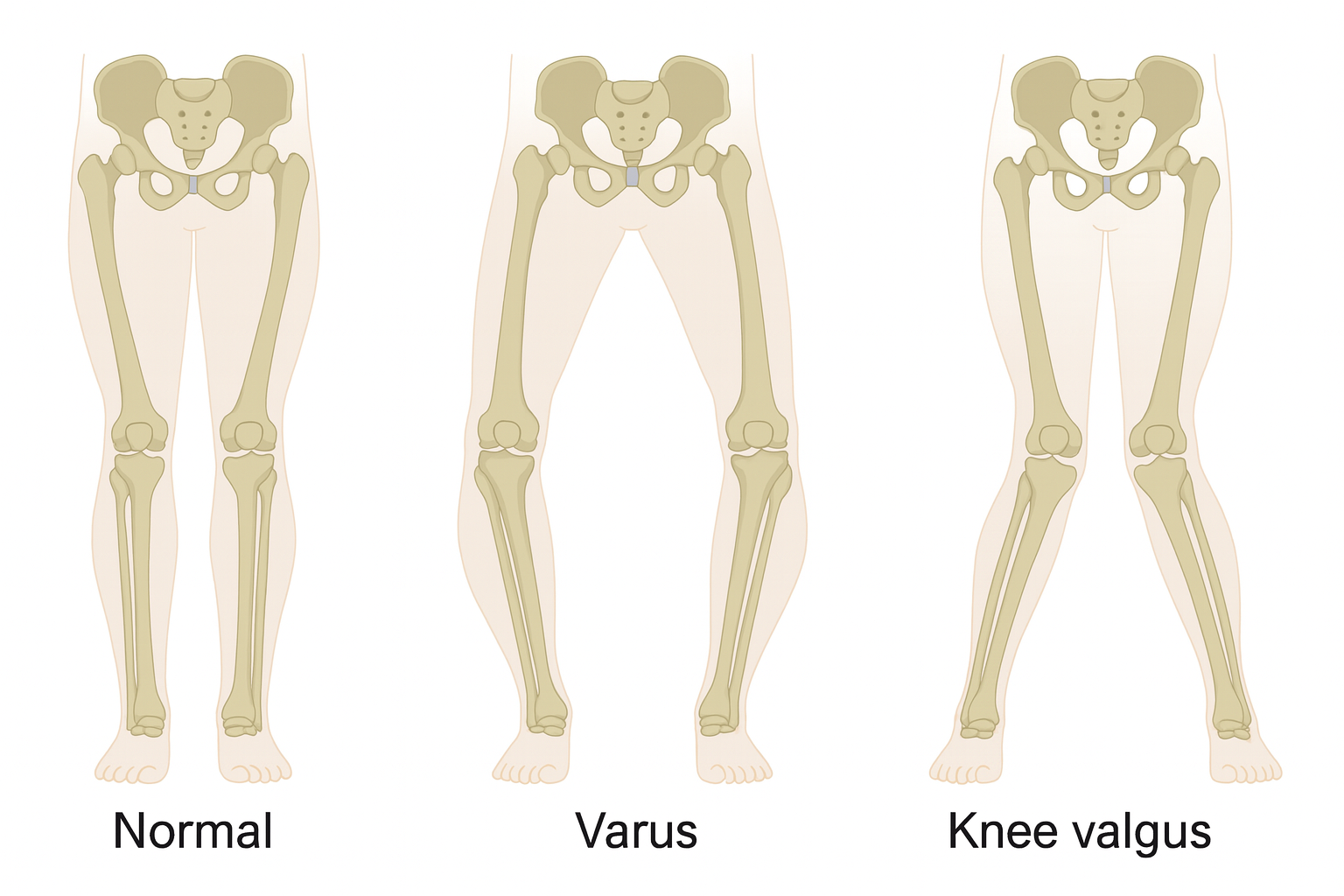
Poor biomechanics played a role. Once I finally paused to dig into the research, I learned a few movement issues were contributing to my runner’s knee. For one, my single-leg squat showed my knee caving inward (knee valgus), and I struggled to do clamshells. This indicated poor neuromuscular control of the hip and knee from weakness in the gluteus medius, external rotators and knee extensors (quadriceps). I later found that Patients with PFPS often show reduced quadriceps and hip external rotator strength compared to healthy controls (Papadopoulos et al., 2012; Bisi-Balogun et al., 2015). As proven by Rathleff et al. (2014), this can lead to poor knee tracking and increased stress under the kneecap. Basically, my alignment wasn’t ideal; each stride was giving my kneecap a bit of a beating due to how my legs were moving.
However, here’s an interesting twist I discovered: weakness might be as much a result as a cause. In two studies that followed new runners over time, those who eventually developed runner’s knee did not start out with weaker legs, they were just as strong as other runners before the pain (Esculier et al., 2016). It’s likely that once the knee began hurting, pain inhibited the muscles, and then they got weaker. In other words, my painful knee could be causing certain muscles to shut down, creating a vicious cycle.
The result: a perfect storm. My case was basically a mix of classic PFPS triggers. Here’s what summed it all up, and what often causes it for others too:
- Overtraining and rapid load increases – I ramped up mileage and intensity too quickly without letting my knees adapt. Sudden spikes in training load are a well-known risk factor (Esculier et al., 2016).
- Ignoring warning signs – I kept running through pain, masking symptoms instead of addressing the cause, which only made things worse over time.
- Muscle weakness and imbalance – Weakness in the quadriceps, glutes, and hip stabilisers led to poor control around the knee and increased stress beneath the kneecap (Rathleff et al., 2014).
- Poor biomechanics – My knee caving inward (dynamic knee valgus) hinted at reduced hip and knee control (Papadopoulos et al., 2012; Bisi-Balogun et al., 2015).
- Over-pronation or flat feet – When your arches collapse slightly, it can change the way forces move up the leg and put more stress on the knee (Barton et al., 2018).
- Inadequate recovery or worn-out footwear – Not enough rest or using shoes with poor support can gradually overload the patellofemoral joint.
- Biomechanical quirks – Everyone moves a bit differently; things like excessive hip adduction or internal rotation during running can throw off knee alignment (Noehren et al., 2013).
- Pain inhibition – Once the pain kicked in, my muscles became less active and weaker, feeding into the same cycle (Esculier et al., 2016).
How I Recovered - and What the Research Says
Once I accepted that I indeed had runner’s knee (stage 1: denial complete), I shifted into problem-solving mode. I’m not going to lie, the recovery tested my patience. There were weeks of boring exercises, FOMO as I skipped group runs, and constant temptation to “test” the knee. But step by step, I made progress. Here’s what my recovery journey looked like, along with the science behind each step:
1. Rest (but stay active)
I learned quickly that total rest wasn’t the answer. The goal was relative rest, reducing painful activities but keeping the body moving. Evidence supports staying active within pain limits, as it promotes circulation and prevents deconditioning (Collins et al., 2018). So, I hesitantly took a break from running for a couple of weeks and focused on other activities that didn’t hurt, like upper-body workouts and gentle cycling, to stay sane. Crucially, I didn’t stop moving altogether.
Strengthening and Rehabilitation (Addressing the Causes).
Whilst resting, I did what I do best at Kinetix Rehab, I ran myself through the same process, assessing flexibility, strength, gait, and training habits. My assessment revealed weak glutes, tight quads, and some hip instability, pretty typical findings for PFPS. My rehab plan focused on progressive strengthening of the hips and thighs.
Weak glutes (especially glute med/max)
These muscles help control hip and knee alignment. Weakness here can cause the knee to drift inward (valgus).
Key exercises:
- Clamshells
- Side-lying leg raises
- Glute bridges/hip thrusts
- Banded monster walks
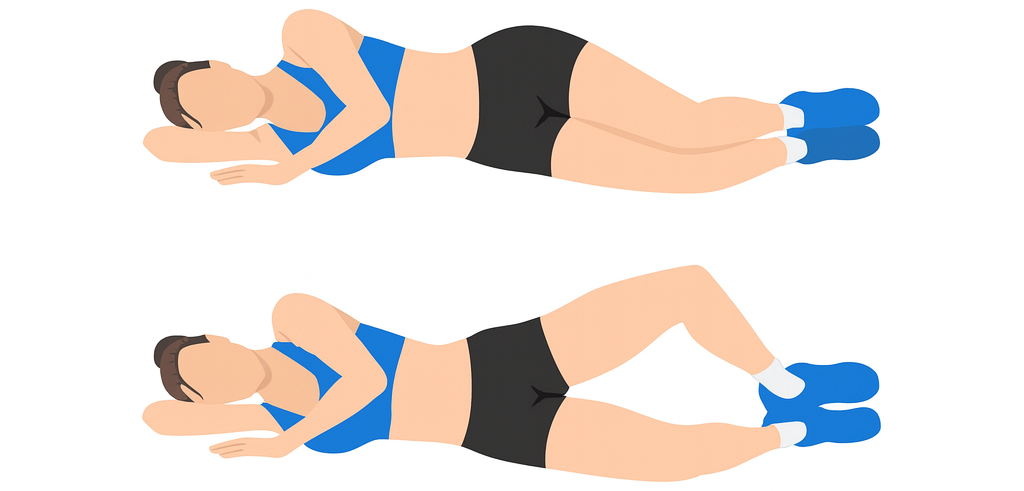
Tight quadriceps
Tight quads can increase compressive forces under the kneecap.
Key exercises:
- Standing or prone quad stretch (hold 30 seconds)
- Thomas Stretch
- Reverse lunges (to improve quad length under load)
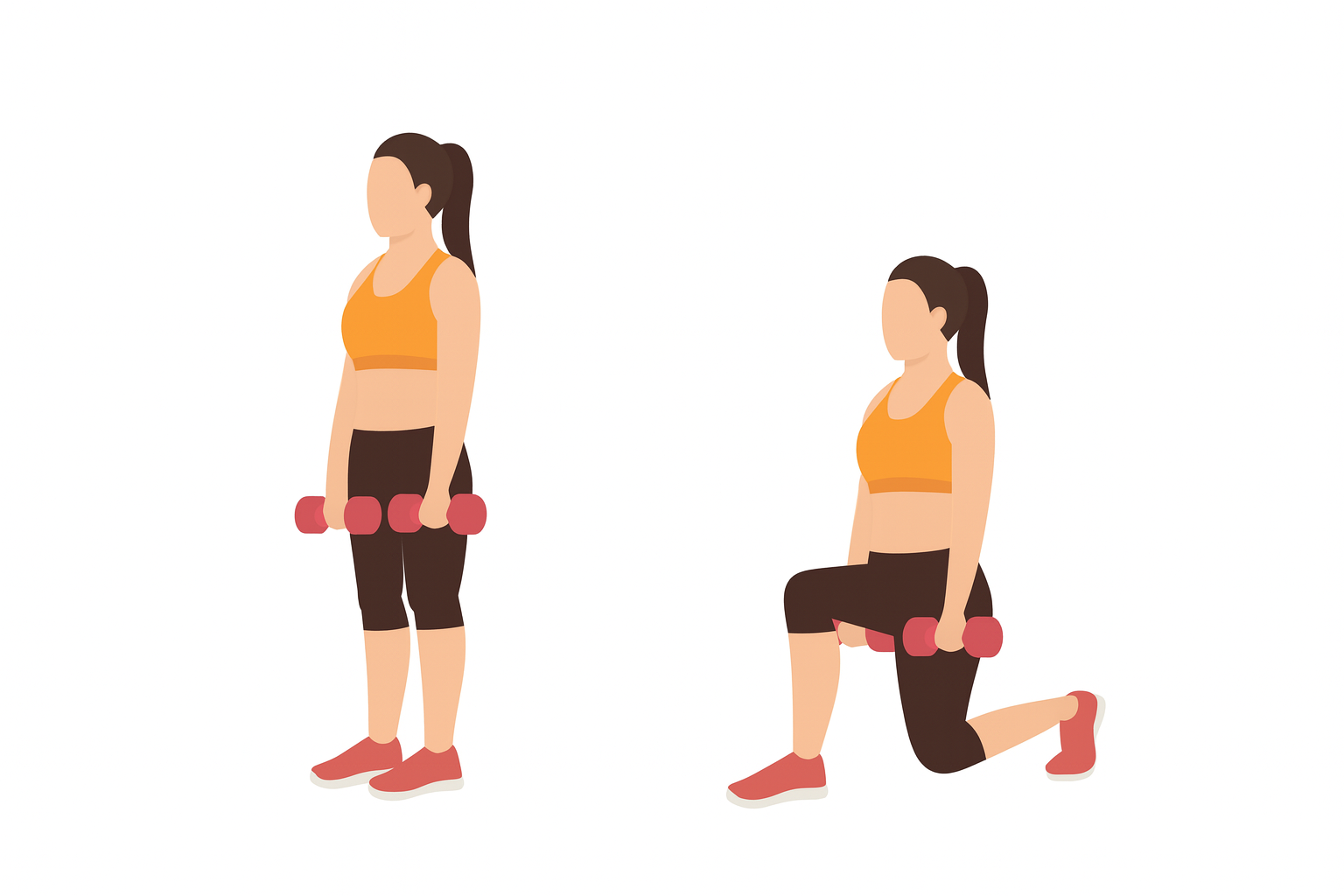
Hip instability / poor control
Lack of stability at the hip often leads to inefficient knee tracking.
Key exercises:
- Single-leg mini squats (focus on alignment)
- Step-ups or step-downs
- Single-leg glute bridges
- Balance drills (e.g. single-leg balance on cushion or BOSU)
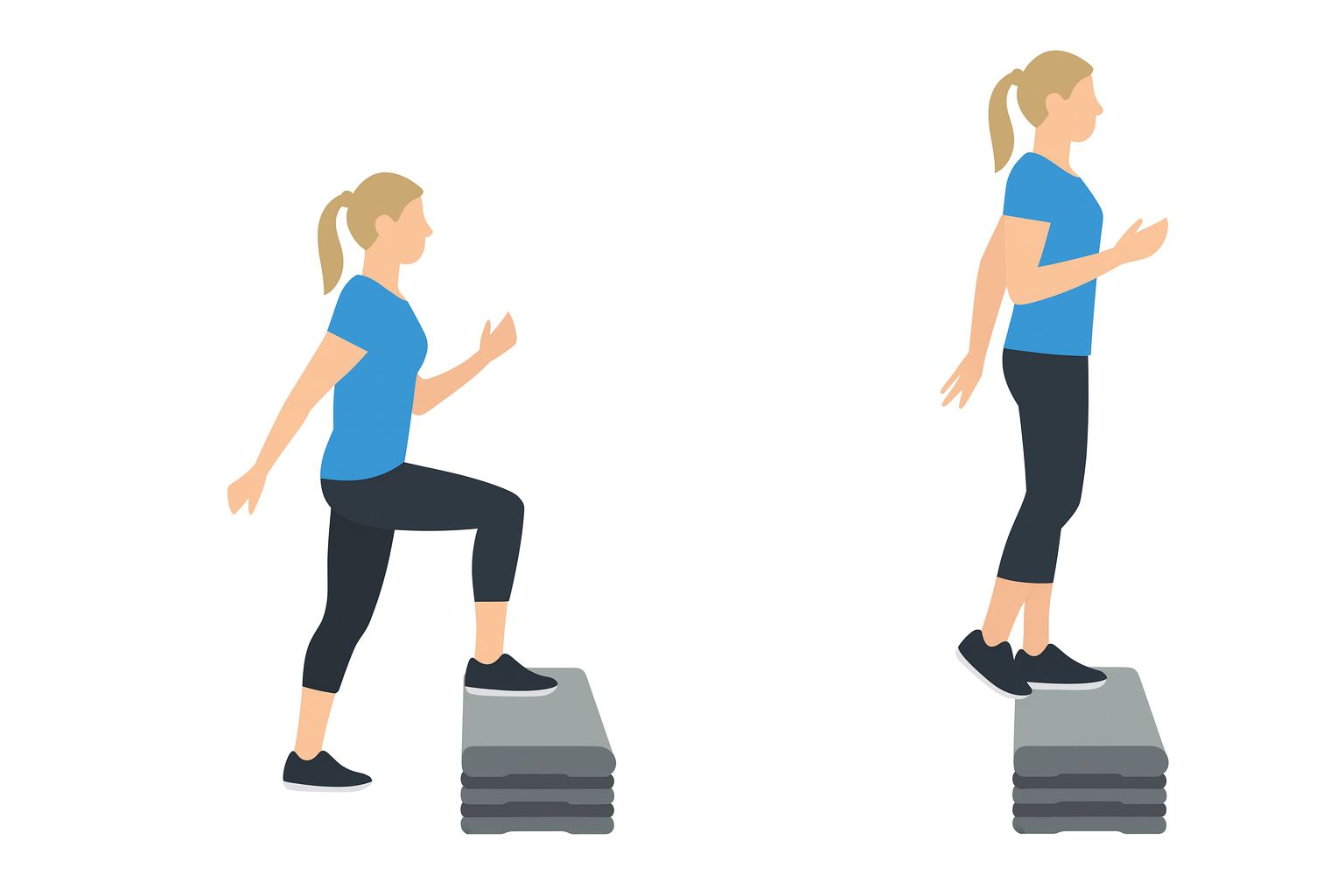
General knee and thigh strength
Strengthening the quads, particularly the vastus medialis oblique (VMO), helps support and guide the patella during movement.
Key exercises:
- Wall sits
- Mini-squats to 45°
- Seated leg extensions (pain-free range)
- Terminal knee extensions with a band
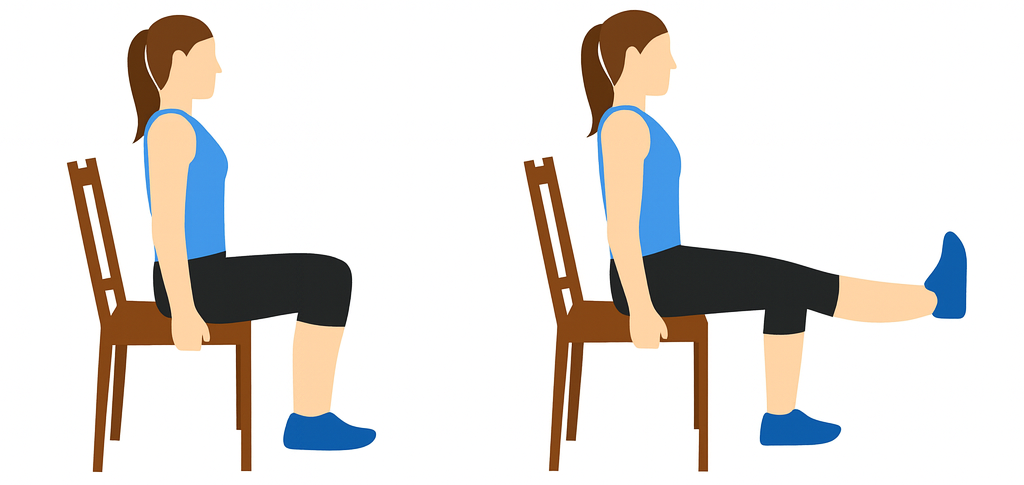
The key was gradual progression and staying within a pain-free range. I stuck with this strength routine diligently. It became almost like a second job (unpaid, unfortunately!). I threw myself into the program that Kinetix (myself) provided. Sure enough, within about 4 weeks I began noticing real improvements: my knee was aching less during daily activities, and I could do harder exercises with less pain. By 8 weeks in, I was virtually pain-free doing normal things and had started easing back into short runs. A large body of research backs this up. Multiple randomised trials show that combining hip and knee strengthening provides the best outcomes for pain reduction and long-term function (Barton et al., 2018; Rathleff et al., 2014). The current clinical consensus is that exercise therapy is the cornerstone of PFPS management (Collins et al., 2018).
3. Addressing biomechanics and gait
Once the pain had settled, I worked on improving my running form. I started by grabbing my phone and filming myself running on a treadmill. After an analysis, the video showed I was over-striding and landing heavily on my heels, both of which increase knee loading.
I introduced gait retraining, increasing my step rate slightly (cadence) and focusing on landing with my feet closer to my body. Research by de Souza Jr. et al. (2024) found that a short, two-week gait retraining programme significantly reduced knee pain in runners with PFPS and improved function at six-month follow-up. That meant shorter, quicker steps (which naturally reduced the impact on my heel). It felt odd at first, like I was doing a quick pitter-patter, but I gradually got used to it, my running felt smoother, and my knees noticeably happier.
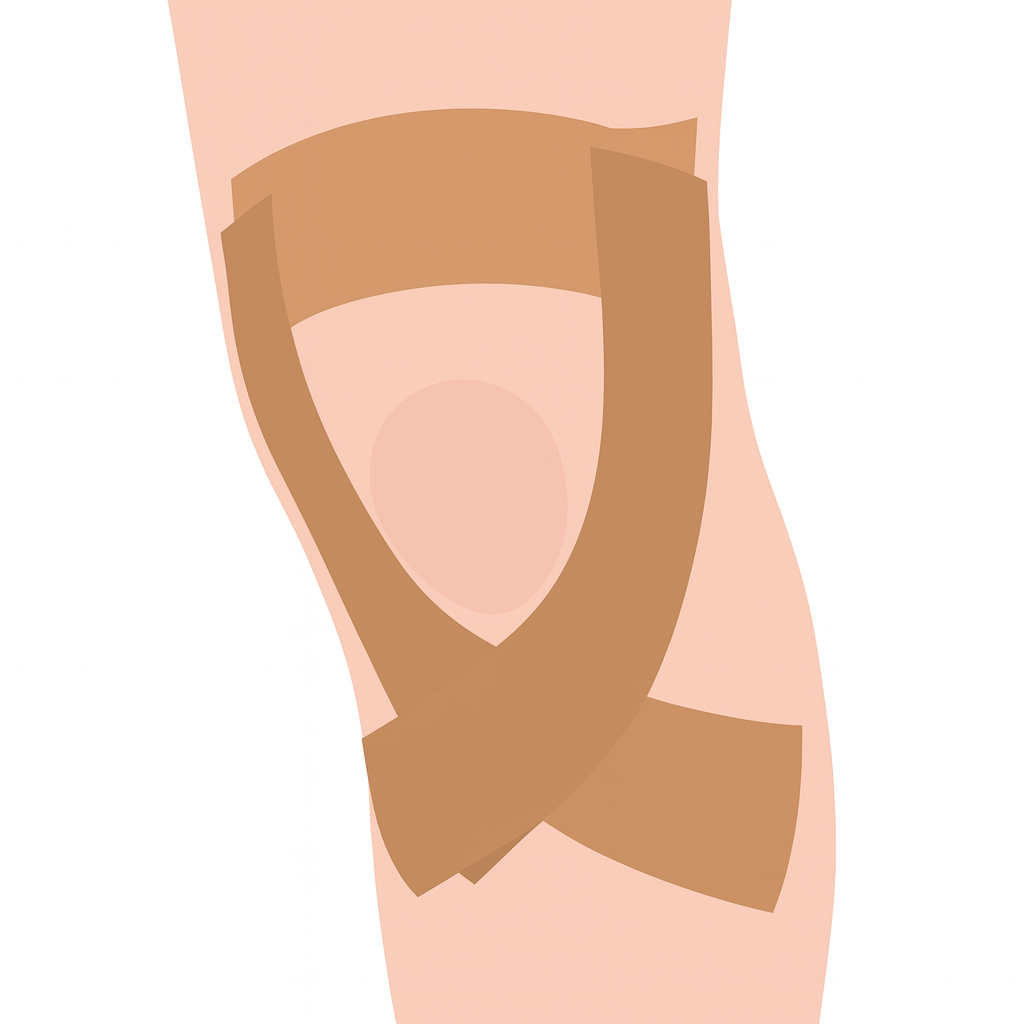
4. Short-term supports
During early rehab, I used patellar taping and foot orthoses to manage symptoms. Patellar taping can temporarily relieve pain by improving kneecap alignment (Callaghan & Selfe, 2012), while arch supports or orthotics may help redistribute forces through the lower limb in the short term (Barton et al., 2018). In my experience, that’s exactly what it did. These tools shouldn’t replace exercise, but can be great adjuncts when pain is limiting progress.
5. Gradual return to running
After weeks of consistent rehab, I started re-introducing running through walk-run intervals and staying on flat, soft surfaces. For example, jog 2 minutes, walk 1 minute, for maybe 20 minutes total. When that felt okay, I slowly increased the running portions. I continued my strengthening routine alongside it, something I still do to this day. Looking back, it was clear that my big mileage jump and sudden hill sessions were the main culprits. I’d ignored the golden “10% rule,” which advises increasing mileage or intensity by no more than about 10% per week. Once I respected that principle and rebuilt gradually, my knee tolerated load far better, and my running started to feel smooth again.
6. Prevention (Don’t Repeat My Mistakes!)
A big lesson I learned is that these rehab exercises are not just for recovering, they’re for preventing. Prevention often comes down to smart training and consistency. I’ve basically turned them into a “prehab” routine. By keeping my quads, hips, and core strong, I drastically lower the chance of runner’s knee making a comeback. Based on both my experience and the research, here are key habits that make all the difference:
- Progress gradually – weekly mileage or intensity by no more than 10 %.
- Incorporate strength training at least twice a week, focusing on the glutes, quads, and core.
- Vary your training with low-impact cross-training (like cycling or swimming).
- Replace running shoes every 300–400 miles.
- Warm up properly and include mobility drills before and after runs.
- Don’t ignore early pain – address small issues before they grow.
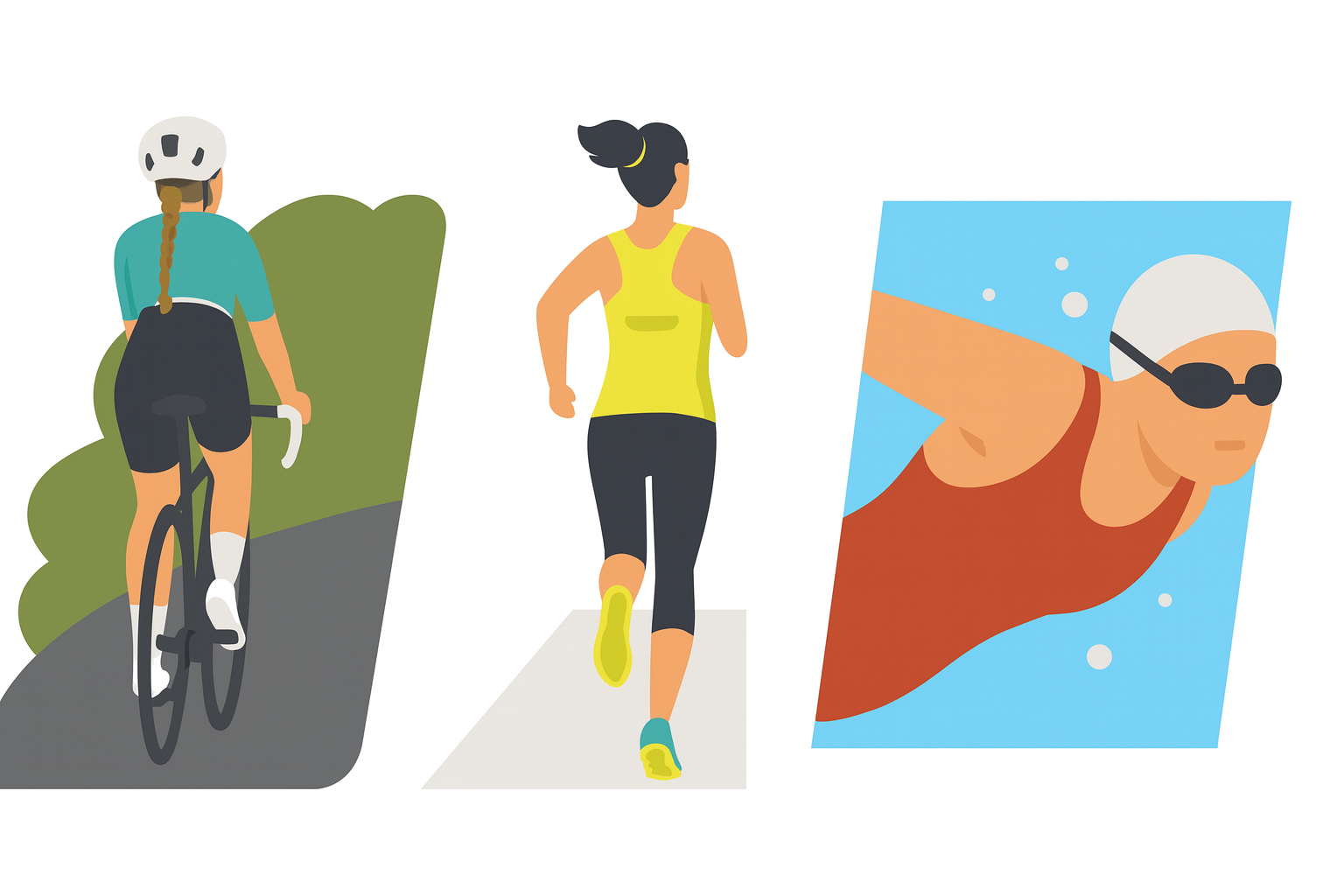
Studies show that continued exercise and load management can significantly reduce recurrence and improve long-term outcomes (Rathleff et al., 2016).
Moving Forward - Stronger, Wiser, and Ready to Help at Kinetix Rehab
Today, I’m back to running pain-free, and honestly, I’m grateful for the whole runner’s knee saga; it forced me to train smarter. I now make strength work, proper warm-ups, and gradual progression a non-negotiable part of my routine.
That experience sparked something bigger. At Kinetix Rehab, I now work with runners dealing with injuries like PFPS, using the same evidence-based approach. Every plan starts with a detailed assessment, looking beyond the knee to identify movement patterns, muscle imbalances, and training errors. From there, I combine hands-on treatment such as sports massage and manual therapy with progressive strengthening and load management, tailored to your specific goals.
Not local to me? Fear not, I’m excited to announce that I’m developing online exercise programs, complete with step-by-step video routines you can follow from anywhere. These programmes are built around the same rehab strategies that helped me recover. Consider it a virtual coach in your living room, keeping you on track. I genuinely can’t wait to share them with you!
If you’re currently struggling with knee pain or noticing early signs of discomfort, visit www.kinetixrehab.co.uk or contact me directly at Jack@kinetixrehab.co.uk. Together, we’ll build a plan that gets you back to running stronger and staying that way. Because if there’s one thing this journey taught me, it’s that recovery isn’t just about getting rid of pain, it’s about coming back smarter, stronger, and more resilient than before. Yeah, sounds like something you’d read on a gym wall… but it’s true.
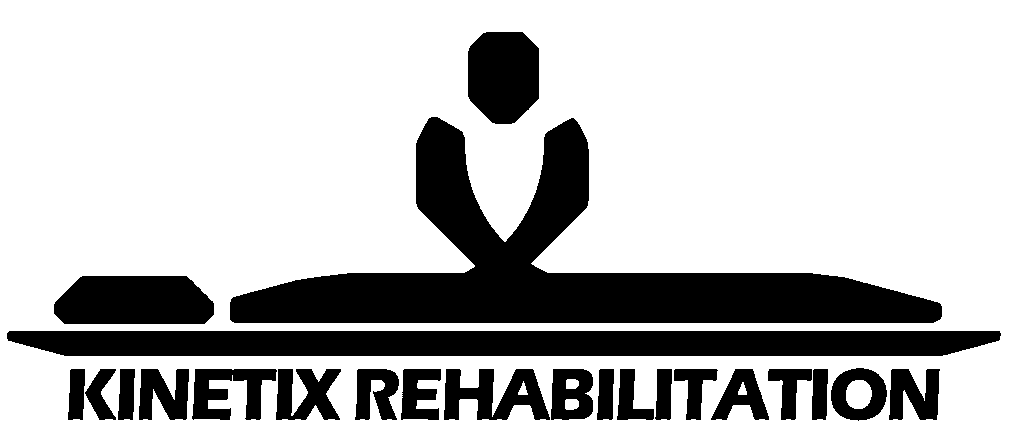
Trending Products
- All Posts
- Business
- Injury & Rehab Blog

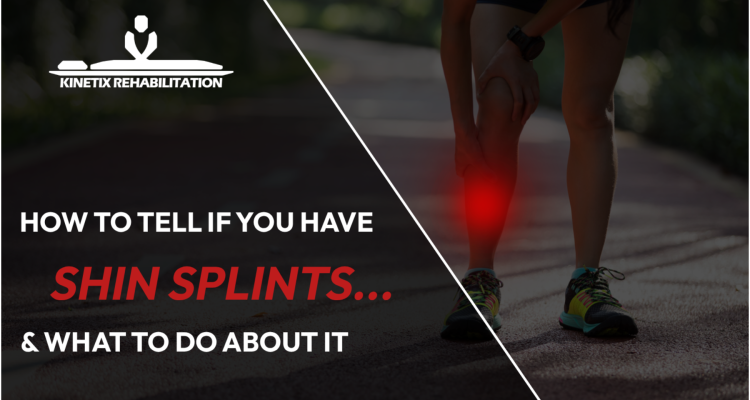
Blog Tag
- how to fix runner’s knee
- knee pain from running
- knee pain rehab
- patellofemoral pain syndrome
- runner’s knee
- Runners Knee
- Shin Splints
- Stress Fractures
- Tendonitis
- Tibial Stress Syndrome
